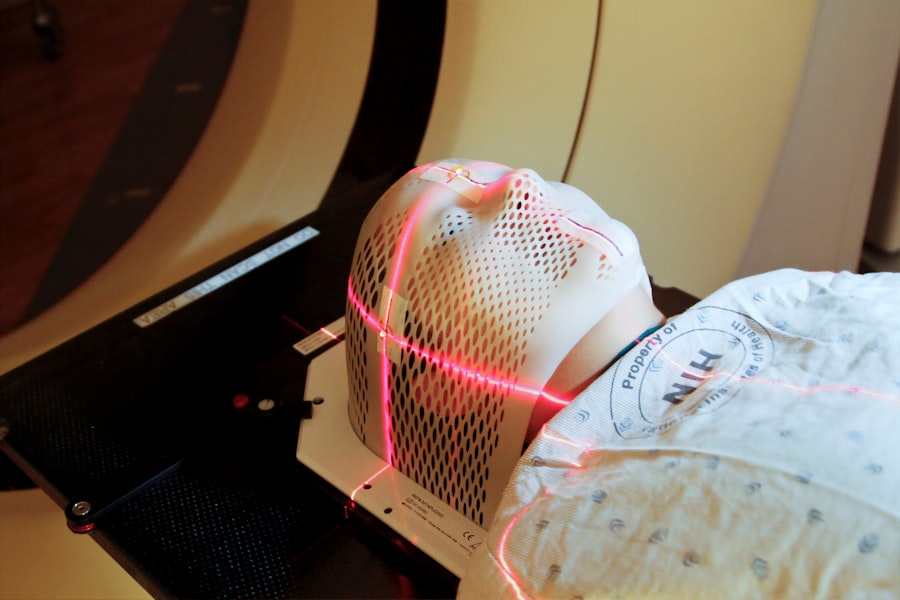Laser hair removal is a popular cosmetic procedure that utilizes concentrated beams of light to target and eliminate unwanted hair. The technology behind this method is based on the principle of selective photothermolysis, where the laser emits a specific wavelength of light that is absorbed by the pigment in the hair follicles. This absorption generates heat, which damages the follicle and inhibits future hair growth.
As you consider this option, it’s essential to understand how the process works and what to expect during your treatment sessions. The procedure typically involves a series of sessions, as hair grows in cycles, and not all hair is in the same growth phase at any given time. You may find that the initial consultation is crucial, as it allows you to discuss your hair type, skin tone, and any concerns you might have with a qualified practitioner.
They will assess your suitability for the treatment and tailor a plan that best meets your needs. Understanding the science behind laser hair removal can help you feel more confident in your decision to pursue this method for managing facial hair.
Key Takeaways
- Laser hair removal uses concentrated light to target and destroy hair follicles, leading to long-term hair reduction.
- Laser hair removal is highly effective for facial hair, with most patients experiencing significant reduction in hair growth.
- While generally safe, laser hair removal carries some risks such as skin irritation, pigment changes, and rare cases of scarring.
- Ideal candidates for laser hair removal on facial hair are those with light skin and dark hair, as the laser targets pigment in the hair follicle.
- The cost and time commitment of laser hair removal can vary depending on the size of the treatment area and the number of sessions required.
- Compared to other hair removal methods, laser hair removal offers longer-lasting results and can be less painful.
- To ensure successful laser hair removal on facial hair, it’s important to avoid sun exposure and follow pre and post-treatment care instructions.
- Before undergoing laser hair removal on facial hair, it’s important to consider factors such as skin type, hair color, and potential side effects.
Effectiveness of Laser Hair Removal for Facial Hair
Noticeable Results in Just a Few Sessions
Many people experience a noticeable reduction in hair density after just a few sessions, making it an appealing option for those who struggle with unwanted facial hair. The effectiveness of laser hair removal can vary based on factors such as hair color, skin type, and hormonal influences, but overall, many find it to be a long-lasting solution.
Precision for Sensitive Areas
One of the key advantages of laser hair removal is its precision. The laser can target dark, coarse hairs while leaving the surrounding skin unharmed. This precision is particularly beneficial for facial areas where sensitivity is higher, such as the upper lip or chin.
A More Aesthetically Pleasing Appearance
As you undergo treatment, you may notice that not only does the hair grow back less frequently, but it also tends to be finer and lighter in color. This gradual change can lead to a more aesthetically pleasing appearance over time.
Safety and Risks of Laser Hair Removal

While laser hair removal is generally considered safe, it is essential to be aware of potential risks and side effects associated with the procedure. Common side effects include temporary redness, swelling, or discomfort in the treated area, which usually subsides within a few hours to a couple of days. However, more serious complications can occur in rare cases, such as burns or changes in skin pigmentation.
It’s crucial to choose a qualified practitioner who uses FDA-approved equipment and follows safety protocols to minimize these risks. Before undergoing treatment, you should discuss your medical history with your practitioner. Certain conditions or medications may increase your risk of complications.
For instance, if you have a history of keloid scarring or are taking photosensitizing medications, you may need to reconsider your options or take additional precautions. Being informed about the potential risks allows you to make a more educated decision regarding whether laser hair removal is right for you.
Ideal Candidates for Laser Hair Removal on Facial Hair
| Criteria | Description |
|---|---|
| Skin Tone | Ideal candidates have light skin and dark hair, as the laser targets the pigment in the hair follicle. |
| Hair Thickness | Thicker, coarser hair responds best to laser treatment compared to fine, thin hair. |
| Age | Adults with fully developed hair follicles are better candidates than younger individuals. |
| Health | Candidates should be in good overall health with no skin infections or conditions in the treatment area. |
| Expectations | Ideal candidates have realistic expectations about the results and potential need for multiple sessions. |
Not everyone is an ideal candidate for laser hair removal, especially when it comes to facial hair. Generally, individuals with light skin and dark hair tend to see the best results due to the contrast between the pigment in the hair and the surrounding skin. However, advancements in technology have made it possible for people with various skin tones and hair colors to benefit from this treatment.
If you have fine or light-colored hair, you may still be able to achieve satisfactory results with specific laser types designed for such cases. In addition to hair color and skin type, other factors play a role in determining candidacy for laser hair removal. Hormonal imbalances that lead to excessive facial hair growth may require medical evaluation before proceeding with cosmetic treatments.
If you are pregnant or have certain skin conditions like eczema or psoriasis, it’s advisable to consult with a healthcare professional before considering laser treatments. Understanding whether you fit the criteria for this procedure can help you set realistic expectations and make informed choices.
Cost and Time Commitment of Laser Hair Removal
The cost of laser hair removal can vary significantly based on several factors, including the geographic location of the clinic, the expertise of the practitioner, and the size of the treatment area. On average, you might expect to pay anywhere from $200 to $500 per session for facial areas. Since multiple sessions are typically required for optimal results—often ranging from four to six treatments—the total investment can add up.
However, many find that the long-term savings on other hair removal methods make it worthwhile. In terms of time commitment, each session usually lasts between 15 minutes to an hour, depending on the area being treated. You will likely need to schedule sessions every four to six weeks to allow for proper hair growth cycles.
While this may seem like a significant time investment initially, many individuals find that they spend less time on grooming and maintenance in the long run. As you weigh the costs and time involved, consider how much value you place on convenience and long-lasting results when making your decision.
Comparing Laser Hair Removal to Other Hair Removal Methods

Comparing Methods
Shaving is quick and easy but often leads to stubble and requires frequent upkeep. Waxing can provide longer-lasting results but may cause irritation or ingrown hairs. Threading is precise but can be painful and time-consuming for larger areas. Depilatory creams offer a painless alternative but may not be suitable for sensitive skin.
The Benefits of Laser Hair Removal
Laser hair removal stands out among these methods due to its long-term effectiveness and precision. While initial costs may be higher than other methods, the reduction in hair growth over time can lead to significant savings on products and services used for maintenance.
By weighing these options carefully, you can determine which method aligns best with your lifestyle and preferences.
Tips for Successful Laser Hair Removal on Facial Hair
To maximize your results from laser hair removal on facial hair, there are several tips you should keep in mind throughout the process. First and foremost, follow your practitioner’s pre-treatment guidelines closely. This may include avoiding sun exposure or tanning products before your sessions, as well as refraining from plucking or waxing in the weeks leading up to treatment.
These steps help ensure that the laser effectively targets the hair follicles without interference. Additionally, maintaining realistic expectations is crucial for a successful experience.
Factors such as hormonal changes or individual responses to treatment can influence outcomes. Staying patient and committed to your treatment plan will ultimately yield the best results over time.
Final Considerations for Laser Hair Removal on Facial Hair
As you contemplate laser hair removal for facial hair, it’s essential to consider both the benefits and limitations of this method. While many individuals enjoy long-lasting results and reduced maintenance efforts after completing their treatments, it’s important to remember that individual experiences can vary widely based on personal factors such as skin type and hormonal influences. Engaging in thorough research and consultations with qualified professionals will help you make an informed decision.
Ultimately, laser hair removal can be an effective solution for managing unwanted facial hair if approached with realistic expectations and proper care. By understanding the process, weighing costs against benefits, and following best practices throughout your treatment journey, you can achieve smoother skin and greater confidence in your appearance. As you move forward with your decision-making process, keep these considerations in mind to ensure that you choose the best path for your unique needs and lifestyle.
If you are considering laser hair removal for your face and wondering if it will work for everyone, you may want to check out the article on inlaserhairremoval.com that discusses the effectiveness of laser hair removal on different skin types. This article provides valuable information on how laser hair removal can be tailored to suit individual needs and skin tones, ensuring a successful treatment for everyone.
FAQs
What is laser hair removal?
Laser hair removal is a cosmetic procedure that uses a concentrated beam of light (laser) to remove unwanted hair. The light is absorbed by the pigment in the hair follicles, which damages the follicle and inhibits future hair growth.
How does laser hair removal work on the face?
During laser hair removal on the face, a handheld device is used to deliver the laser light to the targeted areas. The pigment in the hair follicles absorbs the light, which damages the follicle and reduces hair growth over time.
Does laser hair removal work for everyone on the face?
Laser hair removal may not work for everyone on the face. The effectiveness of the treatment can vary depending on factors such as hair color, skin color, and hormonal imbalances. It is important to consult with a qualified professional to determine if laser hair removal is suitable for your specific skin and hair type.
Are there any risks or side effects associated with laser hair removal on the face?
Some potential risks and side effects of laser hair removal on the face may include temporary redness, swelling, and skin irritation. In rare cases, changes in skin pigmentation or scarring may occur. It is important to discuss potential risks with a qualified professional before undergoing treatment.
How many sessions are typically needed for laser hair removal on the face?
The number of sessions needed for laser hair removal on the face can vary depending on individual factors such as hair thickness, hair color, and skin color. On average, multiple sessions spaced several weeks apart are typically required to achieve optimal results.
Is laser hair removal on the face permanent?
Laser hair removal on the face can lead to long-term hair reduction, but it may not always result in permanent hair removal. Some individuals may experience regrowth over time, although the hair that does grow back is often finer and lighter in color. Maintenance sessions may be needed to sustain the results.





